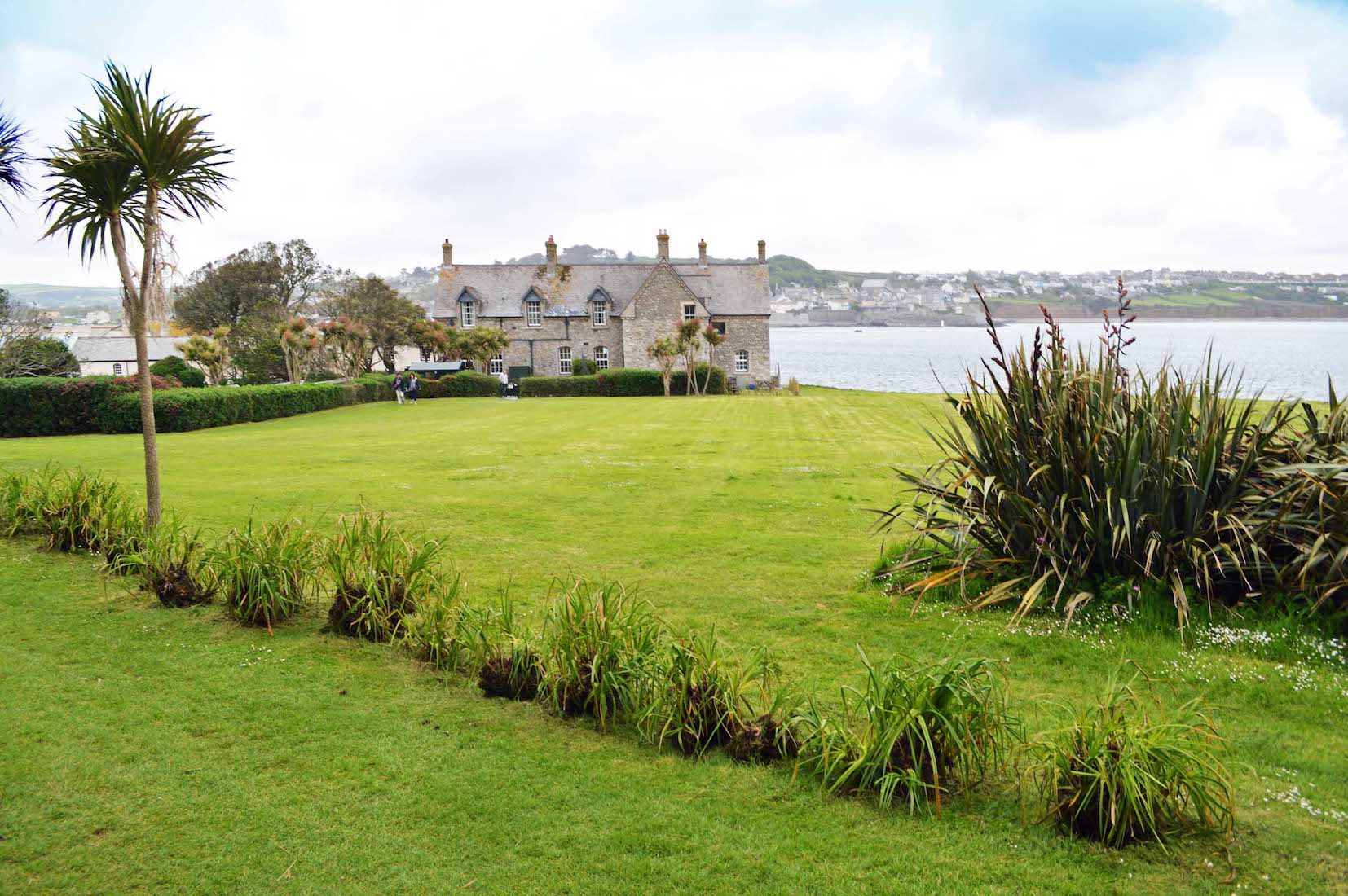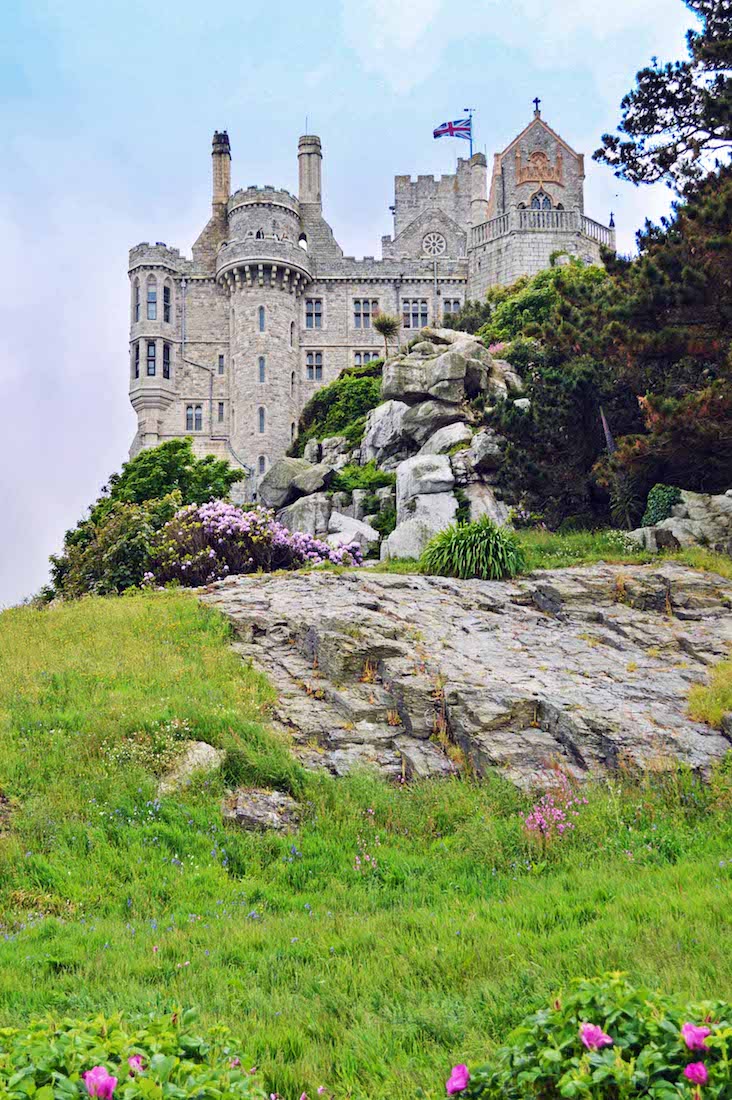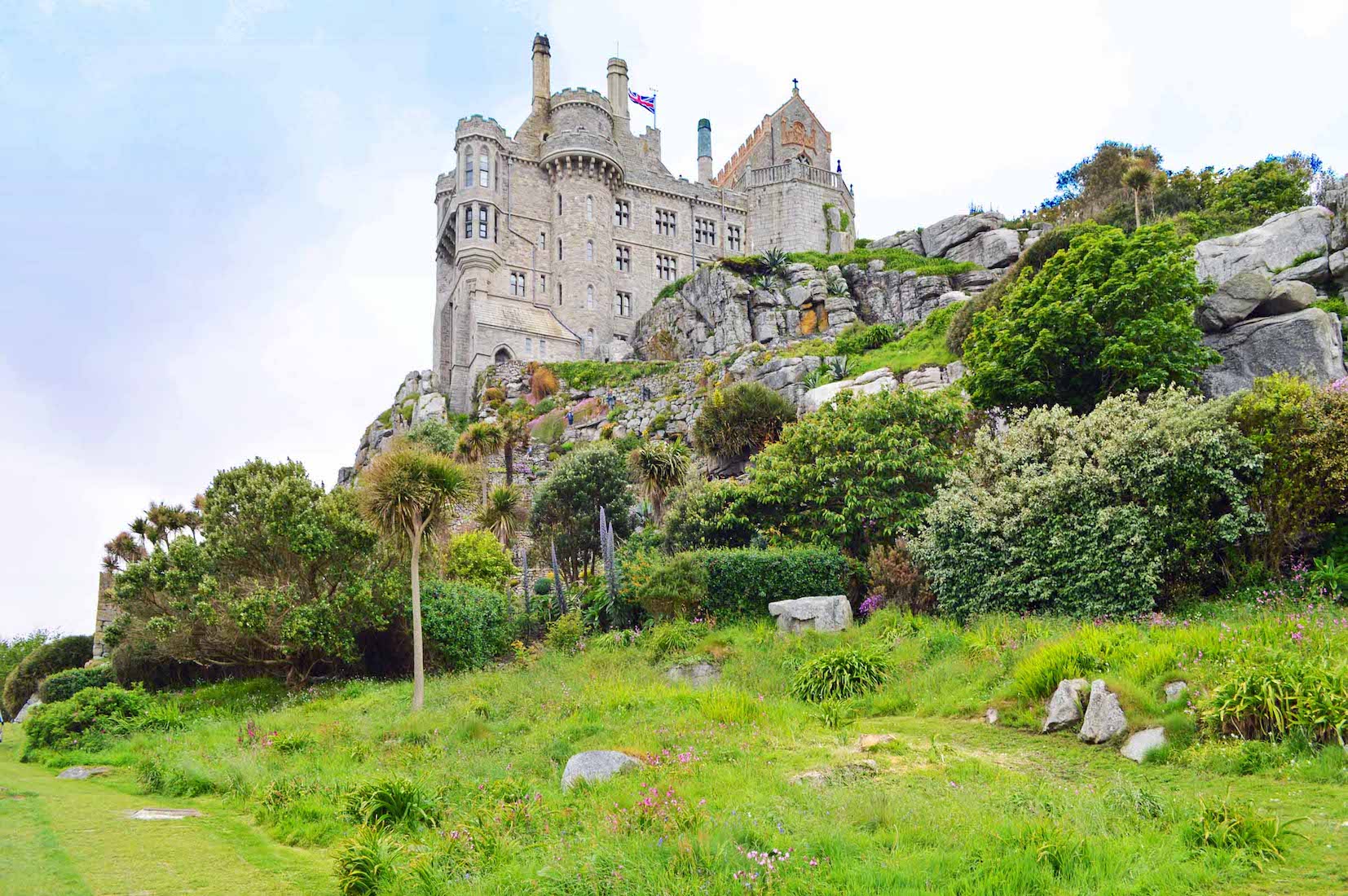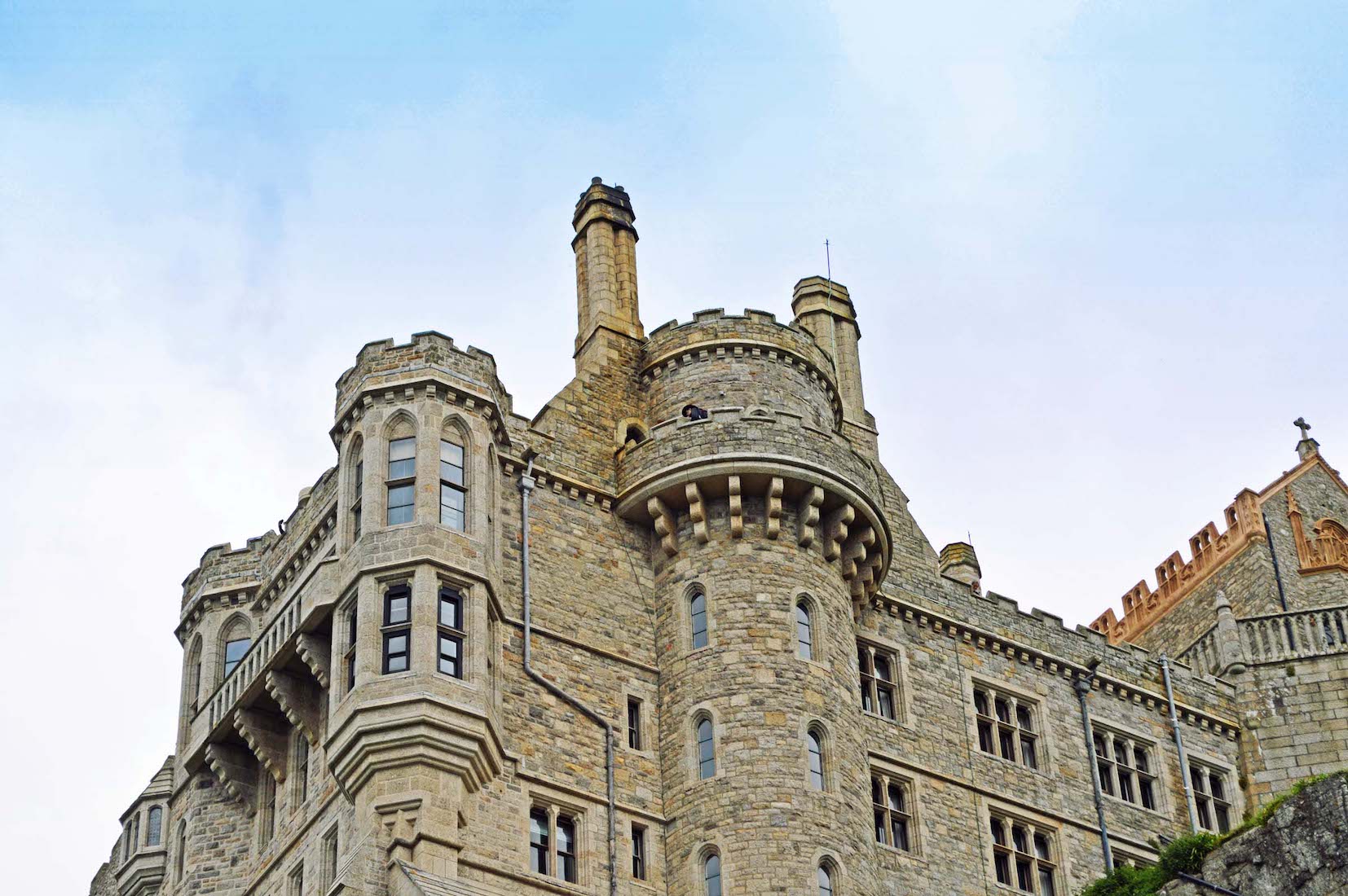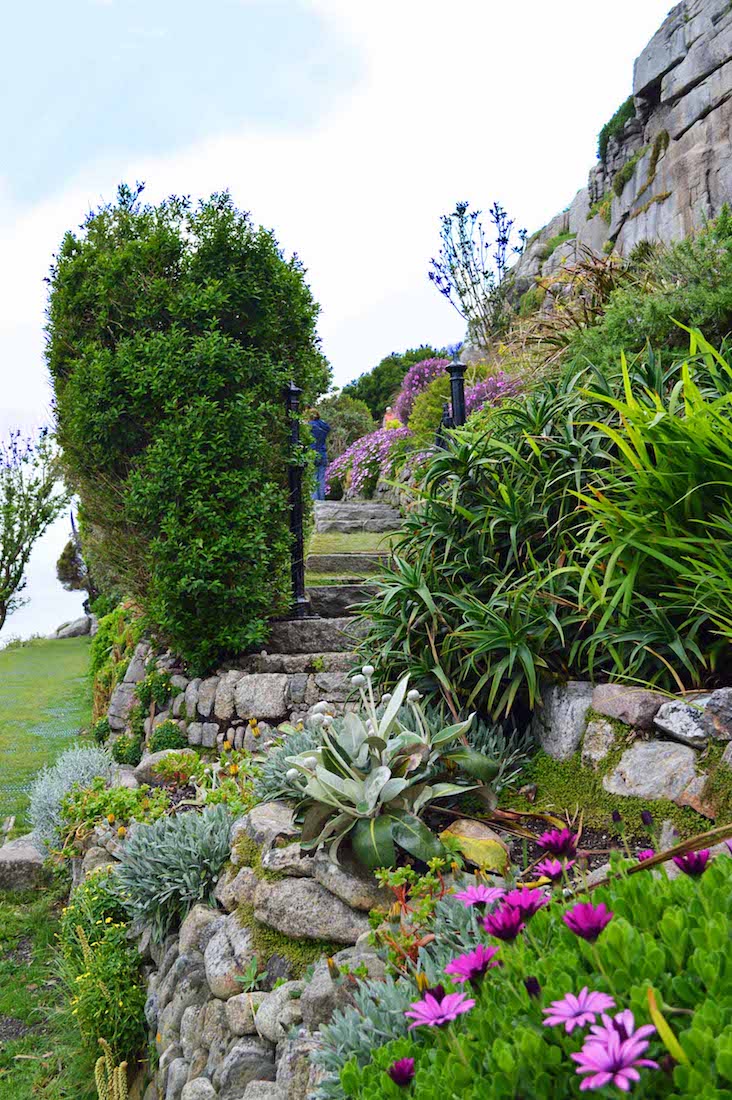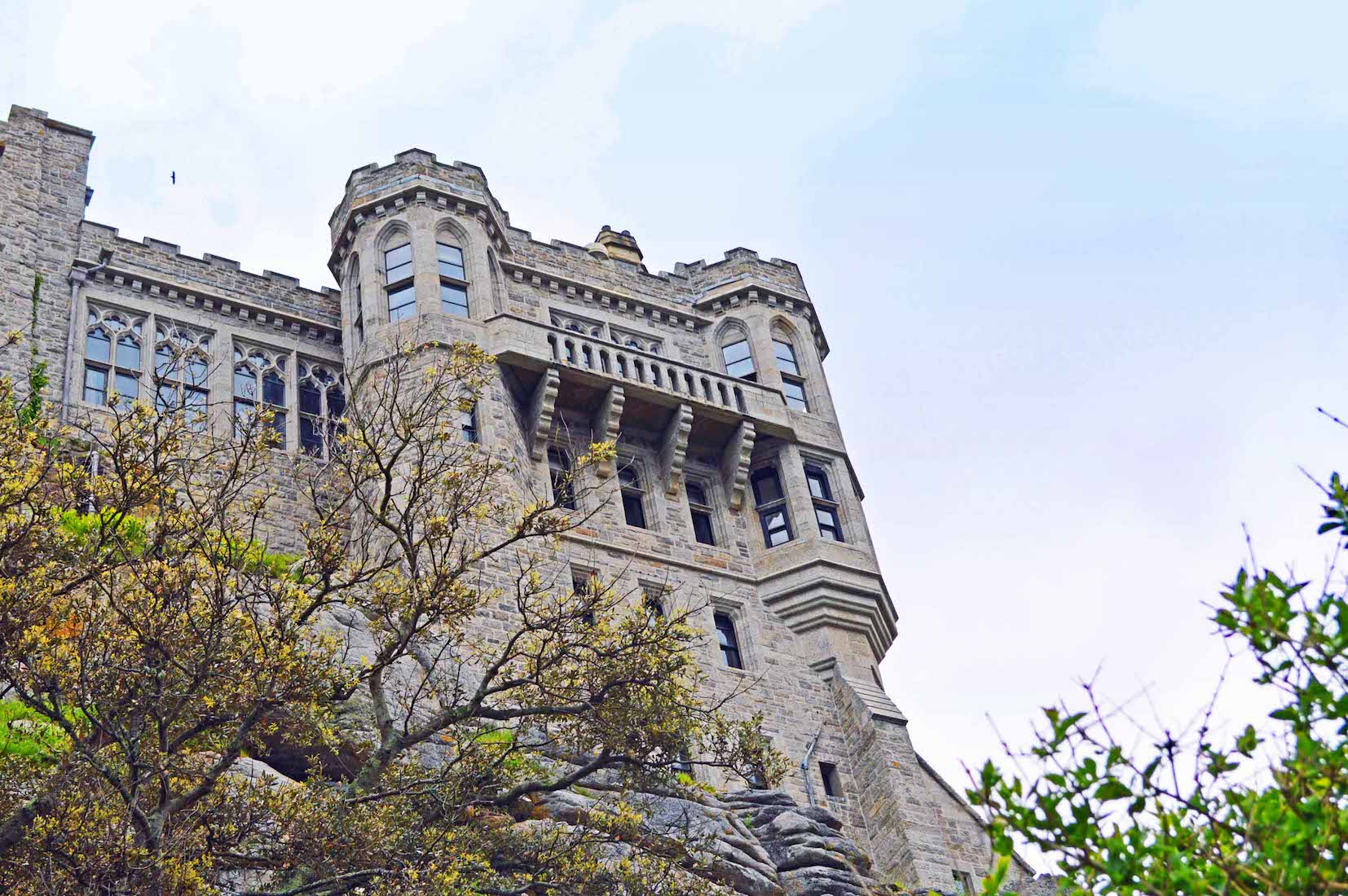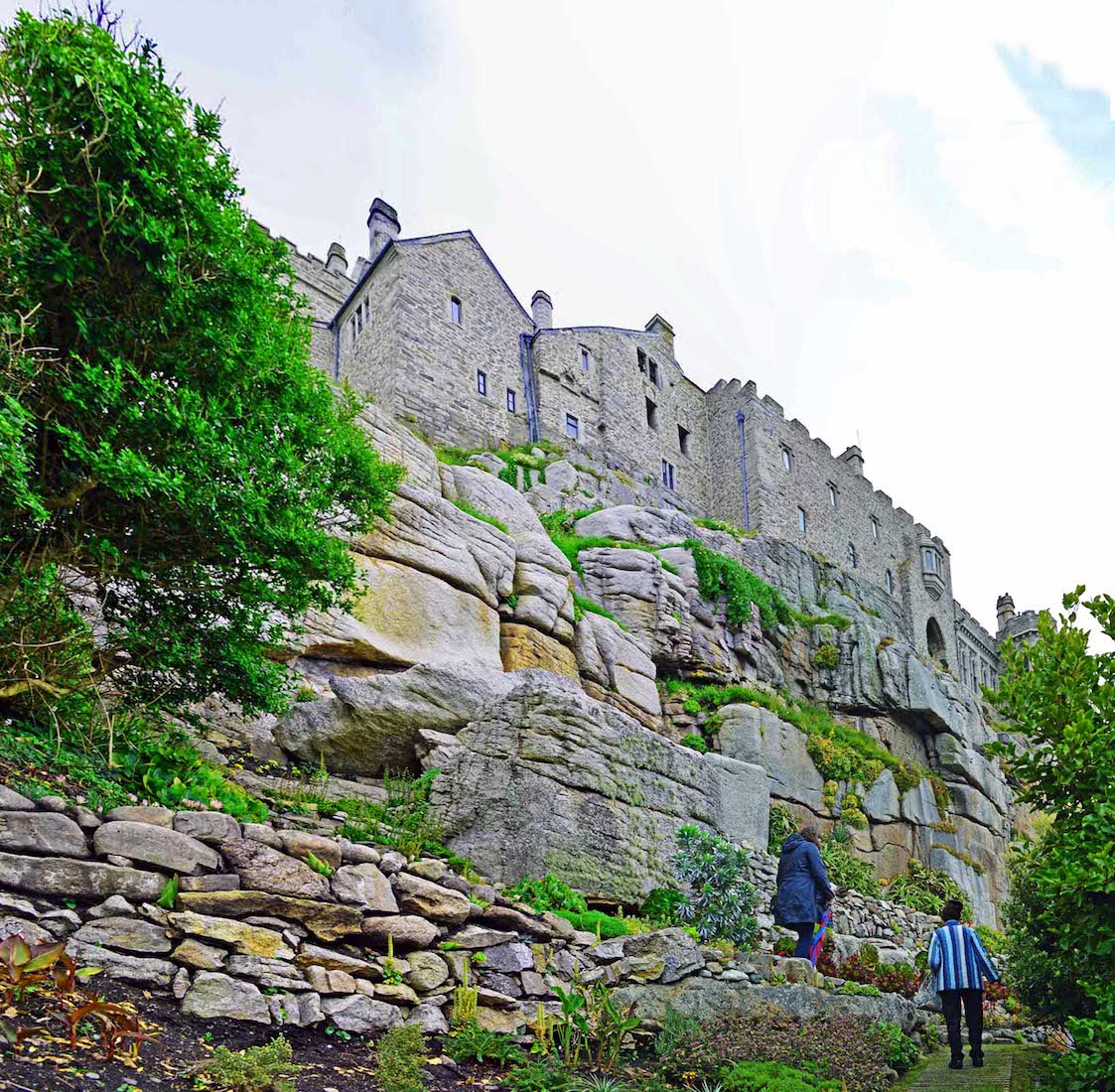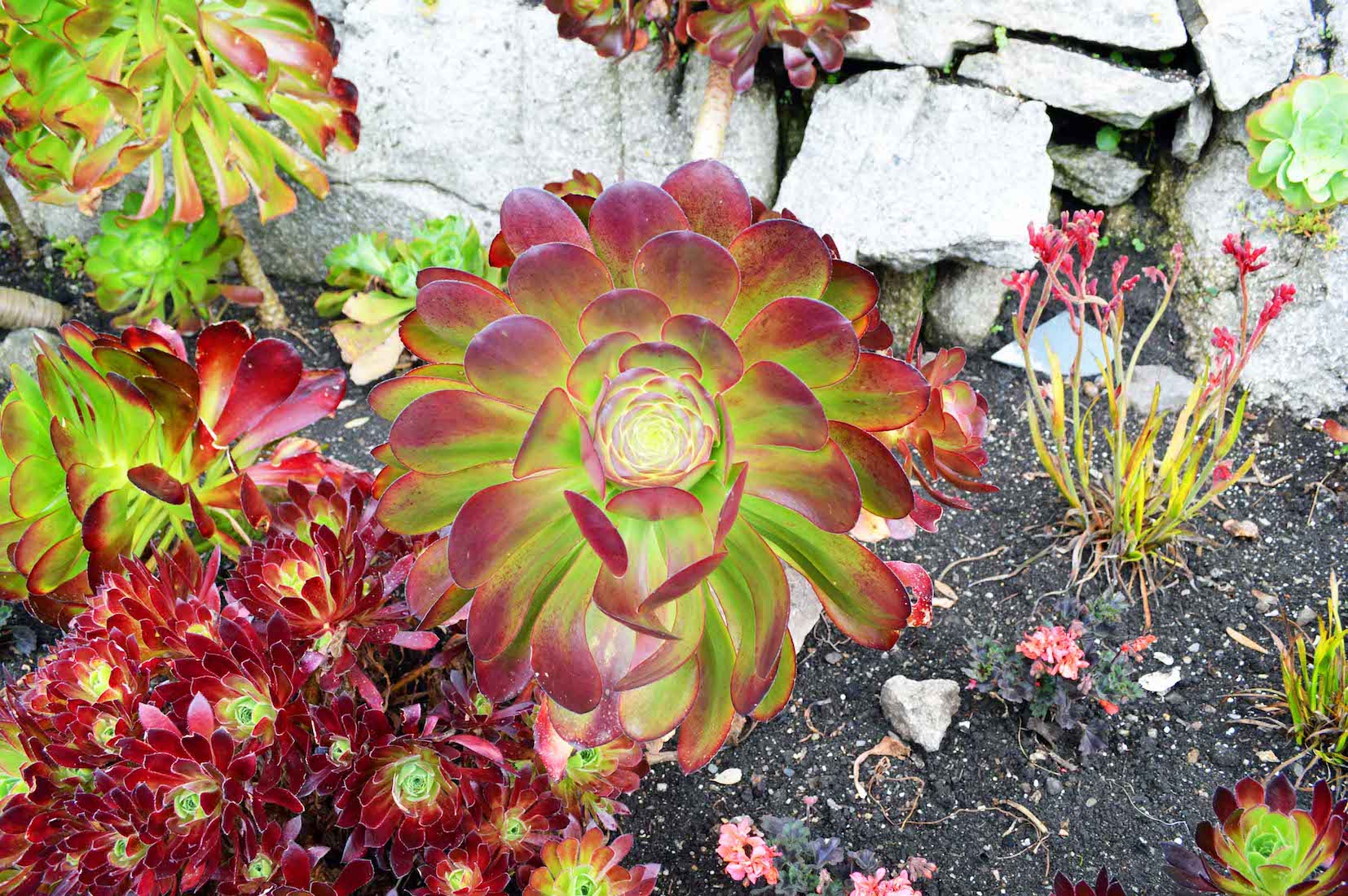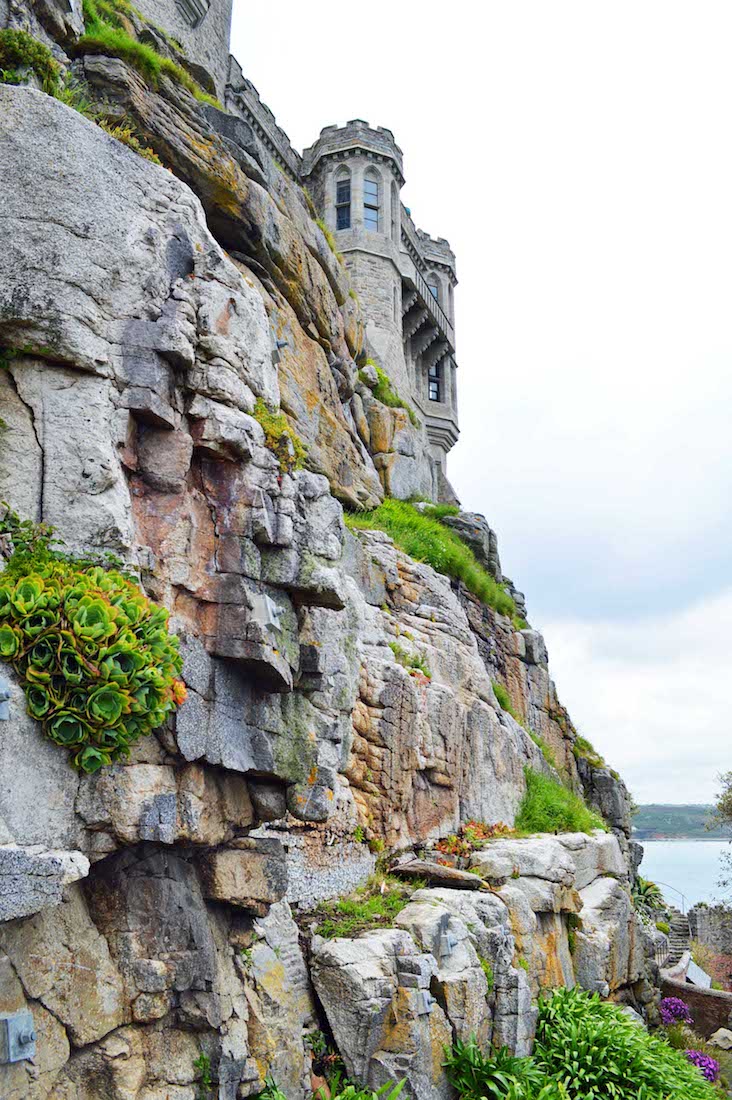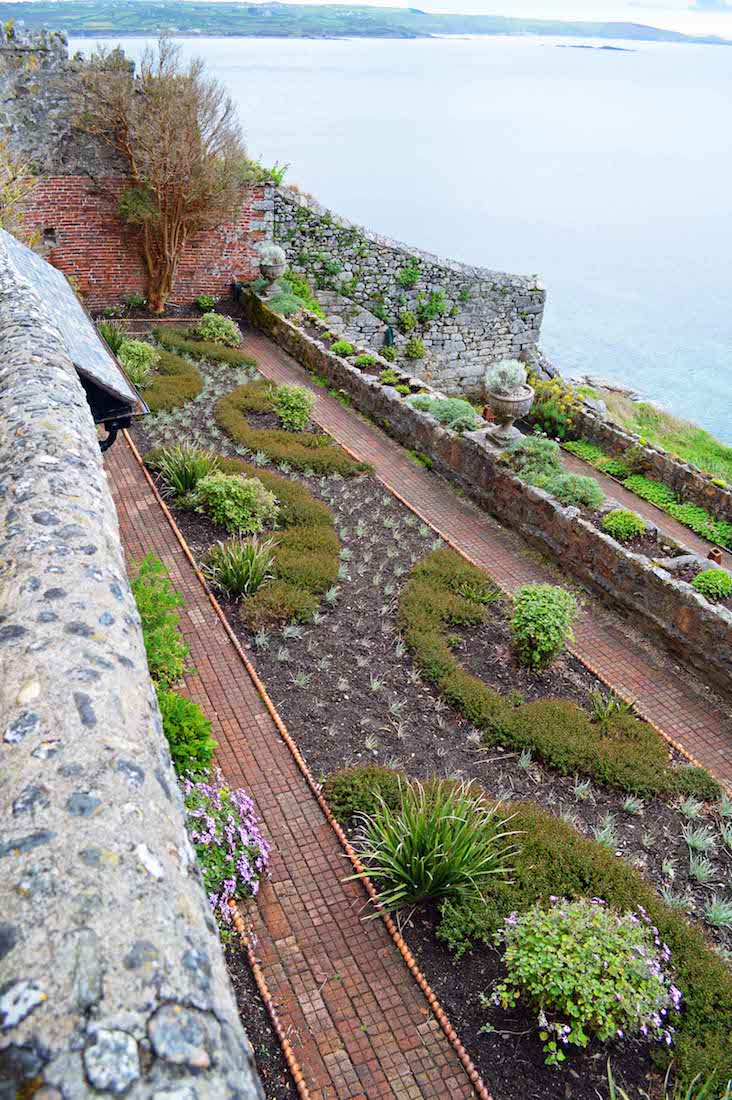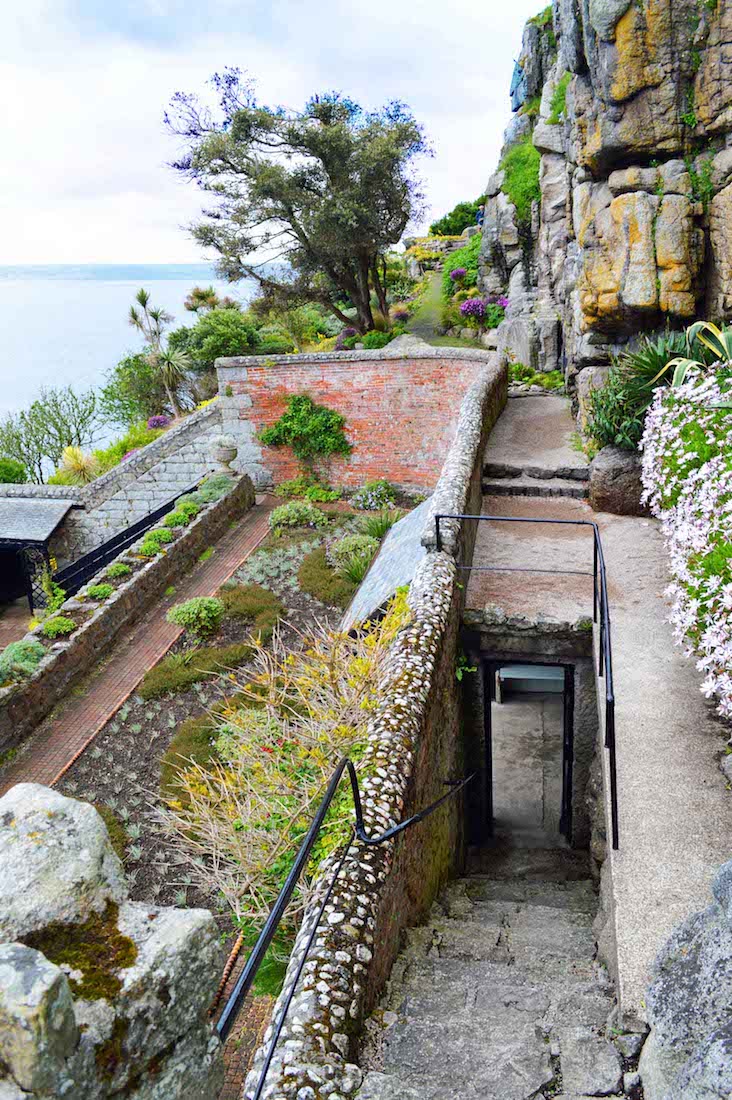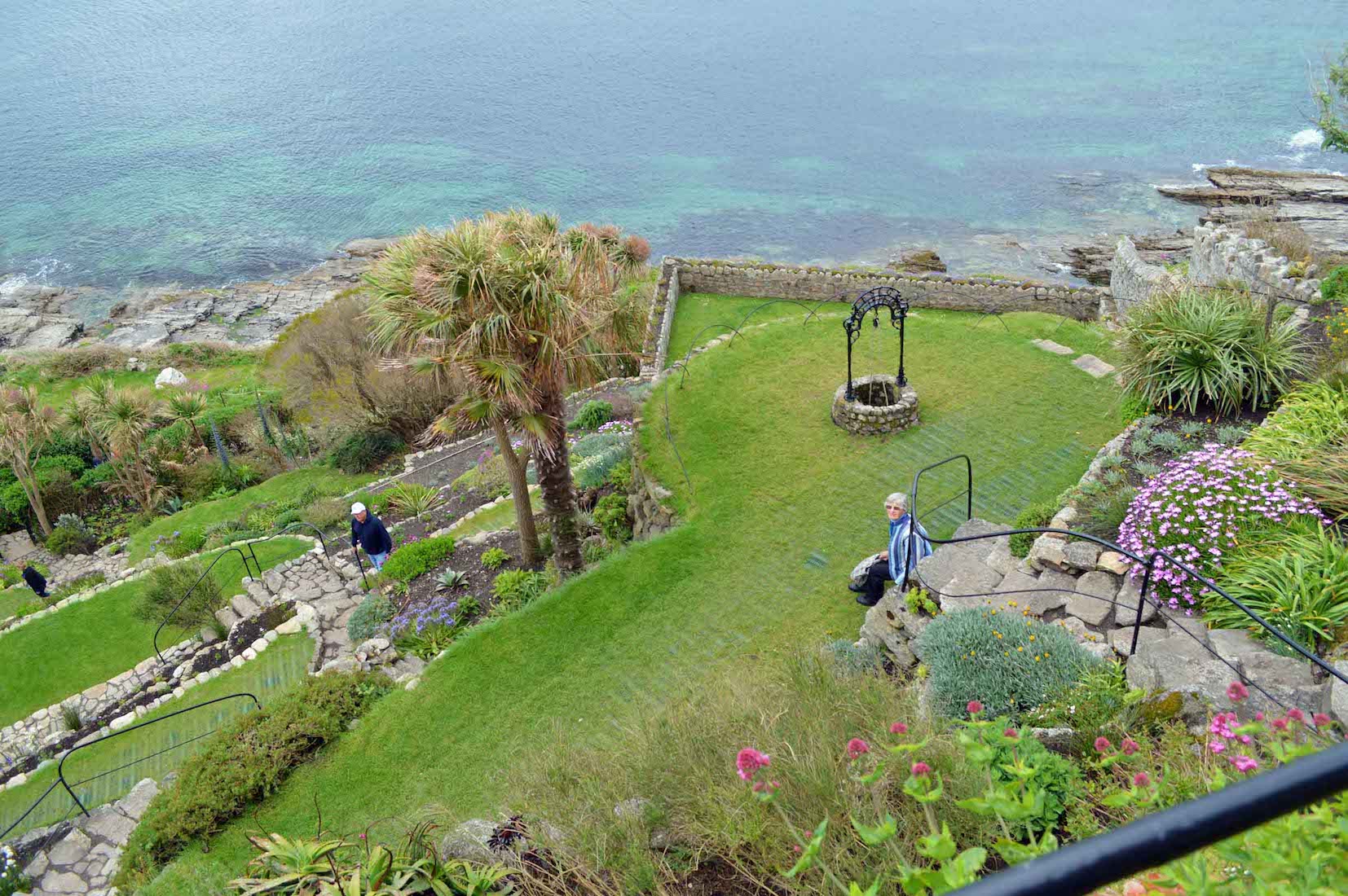C1. GARDEN SKETCH

This sketch of the Mount Garden is taken from a National Trust pamphlet. We begin our exploration at the Garden Entrance at right, following the main path past the lawned area, the pill box, and across the base of the Walled Gardens to the West Terraces. This is not a hard walk, but it is a steady climb, and we take a rest here to look out over the sea. There are now steps and stairs as we explore the West Terraces, walk across the top of the Walled Gardens, and then climb down the East Terraces. Skirting the lawned areas, we finally rejoin the main path, and make our way out of the Garden.
C2. LAUNDRY LAWN
Coming through the Garden gate, the path leads around this enjoyable swathe of lawn. Our pamphlet tells us that this is the ‘Laundry Lawn’. It is obviously a good place for playing, picnicking and relaxing, but presumably in olden times it was used for drying the washing! The harbour is just beyond the house to the left, and we see the township of Marazion across the water.
C3. CASTLE VIEW
Here, as elsewhere, it is the castle which draws our eyes. Rising up above the garden, it appears as an impenetrable fortress atop its rocky outcrop. We enjoy the profusion of flowering rhododendrons.
C4. PILLBOX
During 1940 and 1941, defences were hurriedly prepared throughout the UK to fend off an anticipated German invasion. The most common format was the Pillbox – nicknamed for its shape – and these were placed at strategic points along the coast. There are three of these on St Michael’s Mount.
C5. STONE WORK
As we continue our gradual but steady climb, our perspective of the castle changes, and we become aware of the incredible amount of stone work used in forming this garden. Even for a garden kept in a naturally ‘wild’ state, there is plenty of work here for a team of gardeners and volunteers!
C6. PARAPETS AND TURRETS
Looking more closely at the castle, we note the crenellated parapets and rounded turrets. In spite of the fierce vagaries of the Cornish weather, the building appears to be in remarkably good condition. At right we see the Castle Blue Room with its cross and contrastingly coloured stone work. At centre is a round turret which houses a spiral staircase giving access to the (private) levels of the East Wing.
C7. GARDEN PATH
As we walk up the main path, various tempting garden paths lead off to our right, but we resist these!
C8. BALCONY
Nearing the end of (this part of!) our climb, the castle continues to tower above us: here a balcony extends out with a view over the surrounding ocean.
C9. SEA VIEW
Finally we reach the end of the main track where there is a welcome seat with a view out over the sea. There are natural protective rock formations, and we watch a cargo vessel depart from Penzance Harbour. Penzance is some three miles from here.
C10. ROCKY CLIFF
Time for the hard work! This part of the Mount garden consists of paths and garden beds carved out of this vertical rocky cliff.
C11. ROCK GARDEN
This garden is an amazing feat of construction, with superb ocean views. One can only imagine the effort required in placing some of these large rocks.
C12. SUCCULENTS
The Garden Terraces are not shown in the 1876 Ordinance Survey, but were completed by the time of the 1908 survey. Some of the stone work seems to have been constructed from surplus material from the building of the East Wing of the Castle which was completed in 1878. Many exotic succulents and other semi-tropical plants flourish in the conditions that exist in the Terraces. It is perhaps surprising that anything grows in the harsh Cornish conditions that prevail here, but the rocky walls here retain the heat of the sun and create their own micro-climate.
C13. CRAGGY CLIFF
On one side the craggy rocky cliff ... on the other a panoramic seascape. ...
C14. HORIZONTAL PATH!
... And in between a delightful garden path bordered by beds of colourful flowers. We enjoy this horizontal stretch!
C15. TO THE WALLED GARDEN
We follow the path from the West Terraces towards the central Walled Garden.
C16. TRICKY FOOTWORK
Here and there some careful footwork is required. Although rough in places, the paving is all firm, giving solid footholds. Here we approach the Walled Gardens.
C17. WALLED GARDEN
Clearly the appearance of the gardens will vary with the seasons, and perhaps this is not the month at which they look their best. Still, impressive.
C18. INTERESTING ENGINEERING
These are views of the Walled Gardens in May. Some interesting engineering is revealed here!
C19. TORTOISE LAWN
We have now come to the East Terraces, where we find the Tortoise Lawn, reached by steps from above. This lawn gained its name because the third Lady St Levan kept her tortoises here between the 1940s and the 1970s. The area is supported by a row of three massive convex buttresses, and is known to have existed by the early 19th century. It might even be contemporary with the Walled Gardens.


